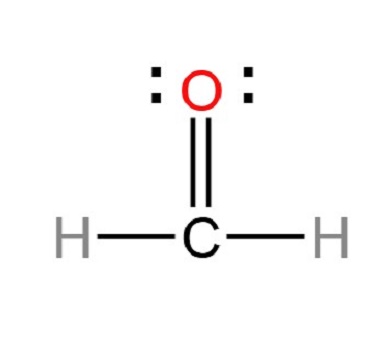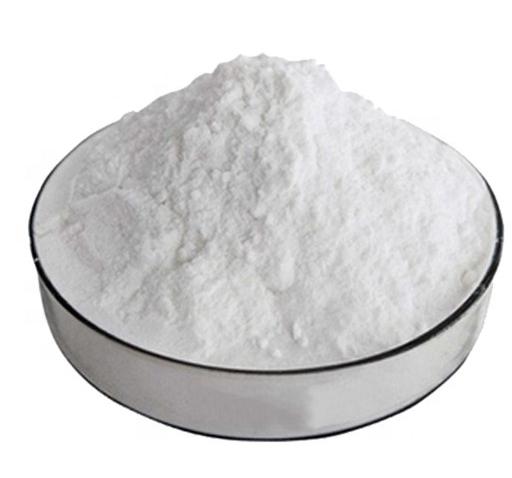What is the Lewis structure for Formaldehyde?
Nov 16,2023
The carcinogen Formaldehyde
Formaldehyde, symbolized as CH2O, is a simple and widespread organic compound. This colorless gas consists of two hydrogen atoms, one carbon atom, and one oxygen atom. Due to its preservative and disinfectant properties, Formaldehyde is often applied in the industrial production of different products, such as textiles, insulation materials, or cosmetics. However, Formaldehyde is classified by the International Agency for Research on Cancer as carcinogenic, and there are numerous studies about the pernicious health effects that frequent exposure to Formaldehyde can pose to human health. Understanding the structure of Formaldehyde is crucial in comprehending its chemical properties and reactions[1].
There are 6 steps to draw the Lewis structure of Formaldehyde.
Step 1: Determine the total number of valence electrons in the Formaldehyde. Hydrogen, a Group IA element, has one electron in its outer shell. Oxygen, a Group VIA element, has six electrons in its outer shell. Carbon is a Group IVA element with four electrons in its outer shell. Hence, the total valence electrons available for the Lewis structure of Formaldehyde = 4 *1 + 1*2 + 6*1 = 12
Step 2: Calculate the number of electron pairs (lone pairs and bonds). Total valence electron pairs = σ bonds + π bonds + lone pairs at valence shells.
Total electron pairs are calculated by dividing the total valence electron count by two. In the valence shells of the HCHO molecule, there are 6 pairs of electrons.
Step 3: Choosing the central atom. A hydrogen atom cannot be a center atom because a hydrogen atom cannot make more than 1 bond. Carbon is more electropositive than oxygen. Therefore, it will be the central atom. After that, connect the outer atoms to the central atom with a single bond (shown below).

Step 4: Mark atoms with lone pairs. As shown above, there are already three bonds, and the other three lone pairs should be marked on hydrogen, carbon, and oxygen atoms. First, mark any remaining lone pairs on the outside atoms. The remaining three lone pairs on the oxygen atom should be marked. The charges on the oxygen and central carbon atoms are as follows.

Step 5: In order to obtain the best Lewis structure, minimize charges on atoms by converting lone pairs to bonds. There are charges on the carbon and oxygen atoms in the center. Hence, a single lone pair of oxygen atoms should be converted to a single covalent bond.

Step 6: Check the stability of the structure
Formal charge = Valence Electrons – Unbonded Electrons – ½ Bonded Electrons
For hydrogen atom: Formal charge=1-0-2/2=0
For carbon atom: Formal charge=4-0-8/2=0
For oxygen atom: Formal charge=6-4-4/2=0
Since the overall formal charge is zero, the above Lewis structure of Formaldehyde is the most appropriate, reliable, and stable.
Reference
[1] Francisco, BrandO Pedro , R. R. Miguel , and Rodrigues José António. "GDME-based methodology for the determination of free formaldehyde in cosmetics and hygiene products containing formaldehyde releasers."Analytical and Bioanalytical Chemistry 410(2018):6873-6880.
- Related articles
- Related Qustion
- What are the dangers of Formaldehyde? Feb 11, 2025
Formaldehyde is a flammable, colorless, volatile compound with a pungent odor.
- Is Formaldehyde(CH2O) polar or nonpolar? Dec 22, 2023
Formaldehyde (CH2O) is a colourless gas,it is the most common and basic aldehyde, composed of two hydrogens, one carbon and one oxygen.
- Formaldehyde: Poison could have set the stage for the origins of life Sep 24, 2019
Formaldehyde, a poison and a common molecule throughout the universe, is likely the source of the solar system's organic carbon solids -- abundant in both comets and asteroids. Scientists have long speculated about the how organic, or carbo
NAD+ metabolism has been linked to a variety of age-related diseases, mainly tumours, metabolic diseases, neurodegenerative diseases, and aging.....
Nov 16,2023APINicotinamide riboside chloride (NRCl) is a potent form of vitamin B3. However, it cannot be used in ready-to-drink (RTD) beverages or high-water active foods due to its instability in water.....
Nov 16,2023APIFormaldehyde
50-00-0You may like
- Formaldehyde
-

- $10.00 / 200kg
- 2025-12-11
- CAS:50-00-0
- Min. Order: 1kg
- Purity: 99.5%
- Supply Ability: 100
- liquid formaldehyde
-

- $450.00/ T
- 2025-03-21
- CAS:50-00-0
- Min. Order: 20T
- Purity: 37% 40%
- Supply Ability: 1000 Tons per year
- Formaldehyde
-

- $2.00/ kg
- 2024-12-17
- CAS:50-00-0
- Min. Order: 10000kg
- Purity: 99%
- Supply Ability: 10000000






